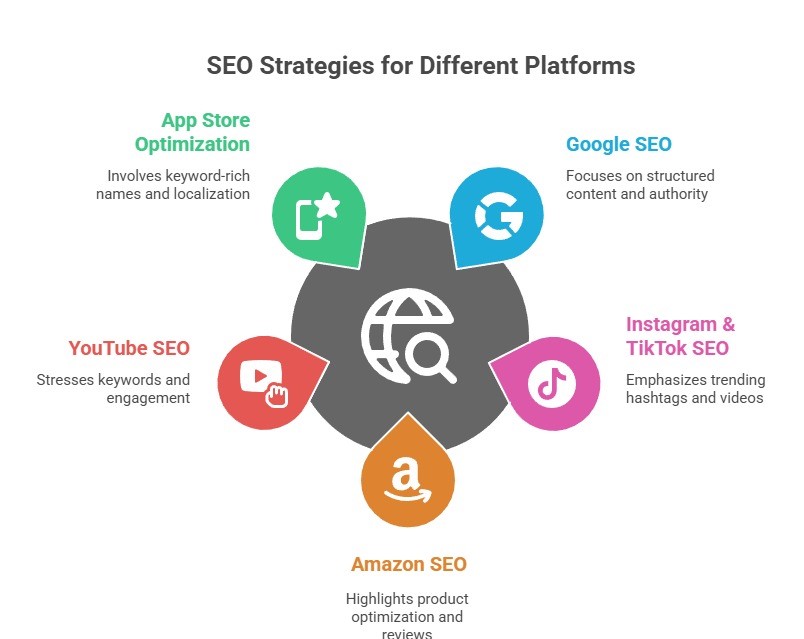Blog Details
Multi-Platform Search Optimization: Boost Your Digital Marketing Results in 2025
Digital marketing is evolving rapidly, and so are consumer search habits. Recent research shows that over 60% of buyers now begin their product searches on platforms like TikTok, Instagram, and Amazon, rather than relying solely on Google. In 2025, focusing only on Google SEO is no longer enough. To maximize your brand’s reach and results, multi-platform search optimization is essential.
Why Multi-Platform SEO Matters
Today’s consumers rarely stick to one platform when researching products. According to a 2024 analysis, 74% of online shoppers use at least three different sites—including Google, Instagram, Amazon, TikTok, YouTube, and the App Store—before making a purchase decision. Relying on a single channel is risky, a sudden algorithm change on Google or Instagram could drastically reduce your visibility overnight. By diversifying your SEO and digital marketing efforts, you ensure your brand remains visible, credible, and resilient—no matter how the digital landscape shifts.
Multi-platform search optimization offers several key benefits. It increases your brand’s visibility across search engines, social media, e-commerce, and app stores. It drives organic traffic from multiple high-intent sources, reducing your dependence on any one platform. It also builds credibility and authority by maintaining a consistent presence wherever your audience is searching.
How SEO Works Differently on Each Platform
Each platform has its own unique search algorithm and ranking factors. To succeed in 2025, you need to tailor your approach for each major channel:

- Google SEO: Focus on publishing reliable, well-structured content. Use schema markup and target featured snippets, as Google’s AI Overviews now pull information from a variety of sources. Expertise and authority matter more than ever.
- Instagram & TikTok SEO: Use trending hashtags, high-quality videos, and interactive content to boost discoverability. Instagram posts with at least one hashtag see 12.6% more engagement. On TikTok, keep videos short, relevant, and aligned with trending topics
- Amazon SEO: Optimize product titles, descriptions, and images with relevant keywords. Customer reviews, sales velocity, and product relevance are key ranking factors. Products with strong sales and four-star ratings or higher perform best
- YouTube SEO: Use high-volume keywords in your video titles, descriptions, and tags. Create compelling thumbnails and encourage likes, shares, and comments. YouTube Shorts are a powerful way to reach new audiences.
- App Store Optimization (ASO): Use keyword-rich app names and descriptions, positive ratings, and high-quality visuals. Localize your app listing for different regions to expand your reach.
Real-World Example
Imagine a beauty brand launching a new skincare line. They post educational YouTube videos, create influencer Instagram Reels, optimize Amazon listings with detailed reviews, and answer skincare questions on their blog. In just three months, sales surge by 40%, with top rankings on Amazon, Google AI Overviews, and trending TikTok videos.
Actionable Strategies for Multi-Platform SEO Success
To thrive in 2025, create content tailored to each platform. Don’t just copy and paste—write product descriptions for Amazon, produce short videos for TikTok, and publish in-depth articles for Google. Use platform-specific tools like YouTube Shorts, Amazon Ads, Instagram Shopping tags, and App Store localization to expand your reach. Track your performance using analytics from each platform, and stay flexible by updating keywords, testing new formats, and maintaining a consistent brand voice.
